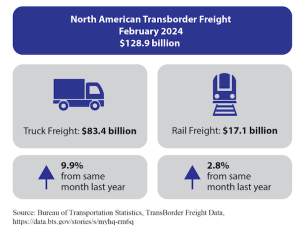Commissioned by cloud transportation technology provider IAS, the report surveys 58 intermodal freight users out of 123 North American BCOs, 3PLs and carriers first interviewed for Aberdeen's August 2011 study Integrated Transportation in a Capacity Constrained Global Market. The aim was to analyze how challenges faced by intermodal users differed from their single-mode counterparts, how they were coping with current global intermodal requirements, and what technology strategies were being adopted in response.
Compared to the others, intermodal users ' companies moving containers to and from ocean ports and rail ramps, mainly as part of international shipments ' face more complex requirements. These include not only coordinating equipment and container movements from port, rail, truck and inland customer delivery locations, but also the tracking and return of the containers to the port designated by the container owner. The challenge is being magnified by the lengthening of global container supply chains, says the report.
'Across a broad spectrum of partners, the synchronized movement and return of international intermodal shipments and containers requires far more levels of status and visibility than single mode domestic transport,' observes report author Bob Heaney, Senior Research Analyst, Supply Chain Management, at Aberdeen. 'Our research found that both single mode and intermodal users are highly focused on improving supply chain visibility to reduce transportation cost and improve on-time and complete shipments. However, intermodal users are more aware and prepared to address the weakest link in the chain - last mile visibility and optimization.'
Intermodal users are 3 times more likely to have automated the exchange of information, 2.9 times more likely to scorecard transportation activities and 1.6 times more likely to have visibility tools to support backhauling against empty miles, finds the report. Yet, 'although they can be characterized as 'early adopters' of automated data exchange compared with single mode users, still only 57% of the intermodal users in the study had v
isibility and optimization tools in place to manage last mile execution,' adds Heaney.
The report highlights the particular challenges of improving visibility in North American operations due to the many parties controlling first and last mile deliveries to shipper/3PL distribution centers, including a large pool of independent motor carriers. Based on its research findings, Aberdeen recommends the use of existing collaborative cloud-based platforms as the swiftest and most flexible route to bring all the relevant partners onboard and achieve the required levels of visibility.
To illustrate, the report cites the case of a large top tier freight forwarder and 3PL undertaking tens of thousands of multimodal container deliveries to US clients every month. In Europe, the company was able to implement a precise last mile tracking process based on dedicated GPS-equipped delivery trucks. But when it looked to emulate this system in North America, it quickly became clear that the operating model was completely different, with over 450 motor carriers responsible for the company's last mile deliveries.
'Finding a system of connectivity to this carrier base was crucial, but once we found it existed we were able to integrate quickly', according to the 3PL's Head of Global Intermodal. The system in this case was the IAS Dispatch platform, which the company is now leveraging to control first and last mile container moves into and out of the US. A second case study featur








